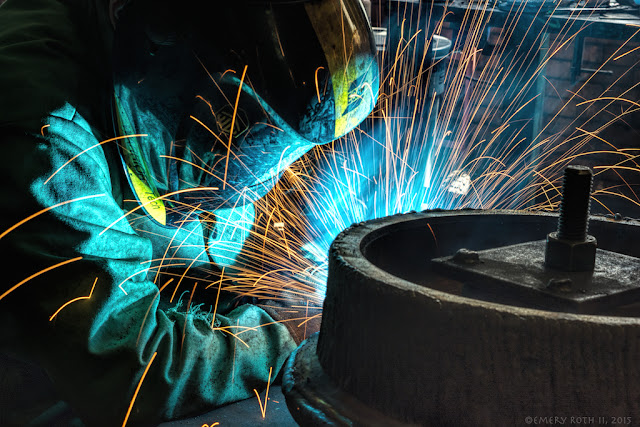PHOTOGRAPHER'S JOURNAL: Brass Valley overflows with stories. By telling who we were, they help us know who we are. We forget them at our peril.
Saturday, August 22, 2015
Inside Bristol's, Waterbury, 2013
PHOTOGRAPHER'S JOURNAL: Brass Valley overflows with stories. By telling who we were, they help us know who we are. We forget them at our peril.
Wednesday, August 19, 2015
Bristol's, Freight-Side, 2013
PHOTOGRAPHER’S JOURNAL: The news of the fire at "Bristol’s,” came while we had house guests, and I have only today taken a ride by to see what remains, though the web video told me it would be inconsequential. This image was shot in 2013 on one of several visits. The blaze is a sad end to a place with a noble history, and I mourn its passing personally, while knowing it will be better when the earth is leveled over the site. It should not have lingered so long.
Professor Bristol’s story deserves to be better known, his passion for creating devices for metering and recording anything, his appearances at the great World’s Fairs of the 19th century, his part in controlling industrial waste and pollution, his early years in the Workingman’s School of the Ethical Society, and his role in the creation of the first full-length talkie a year before the "Jazz Singer." He is one of the great, unsung innovators of Brass Valley.
This morning I drove past the site, and the gates were open and lights flashing beyond. These were, I assume, security people and investigators. It appeared as if at least one of the high walls was still standing for cranes to demolish.
The buildings (I’ve read there were as many as 15) have for many years been beyond re-purposing. What might they have added to this South Waterbury area had Bristol’s not been left for a quarter century to rot and burn? How does one measure the value that would have accrued had they been re-purposed as the William Henry Bristol technical school, training teens for new technologies? Imagine kids learning new media skills inside walls where talkies were invented? …or if they had become the Bristol Garden Apartments anchoring the community in time and culture at a spot beside the Naugatuck where I often see people fishing? Imagine possibilities. We worry about the cost of clean-up but are far less scrupulous of the on-going bill for mess-up and decay that transgress property lines.
These buildings were lost a quarter century ago. Brass Valley has vanished, and what is left is its fading afterglow, alas in this case too literally so. What fragments can yet be preserved to give future generations something to touch and connect them to a proud tradition? –to connect the future to the achievements and lessons of the past?
Wednesday, August 12, 2015
On Composition
PHOTOGRAPHER’S JOURNAL: As a photographer I appreciate the concentrated focus of the welders craft, as he adds metal in order to even out worn train wheels. What others find tedious, he finds centering. Like a farmer plowing, row by row, his fields, the welder lays down rows of new metal that the wheel can be milled to precision and turn true.
Subscribe to:
Posts (Atom)











